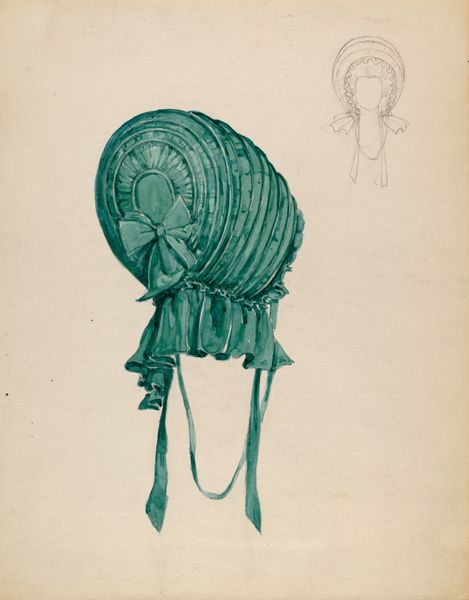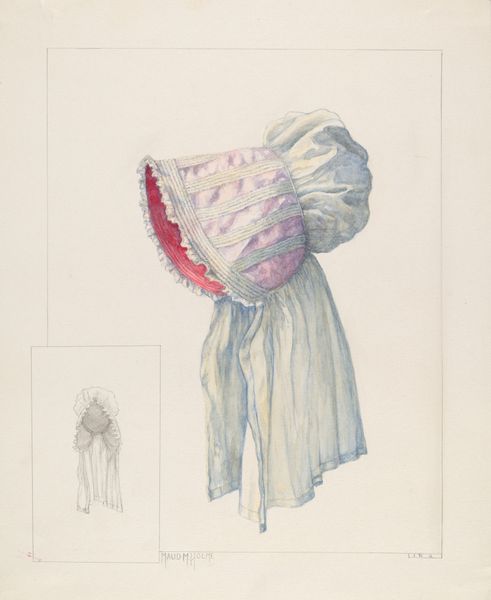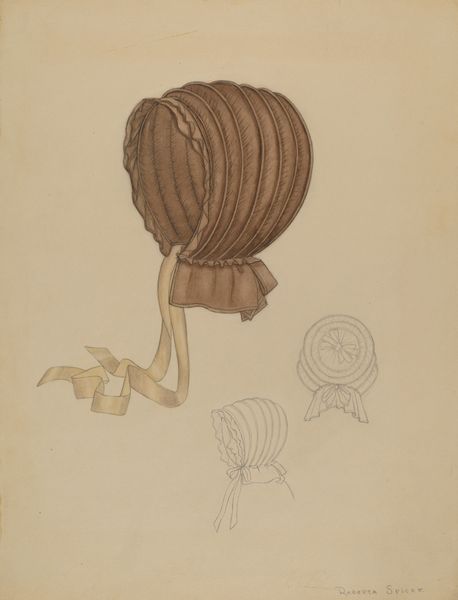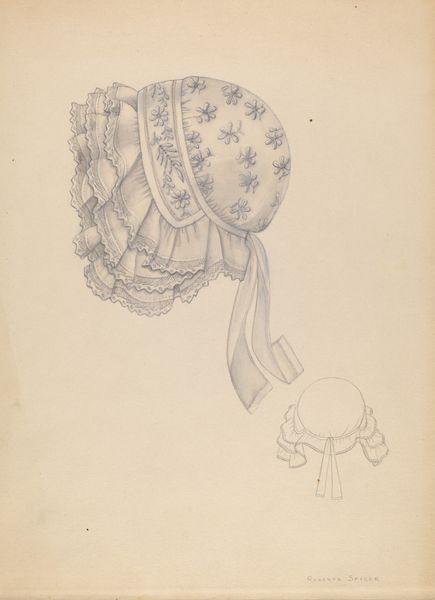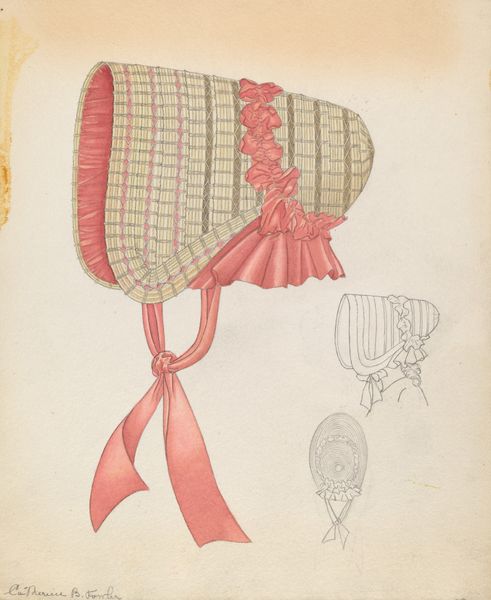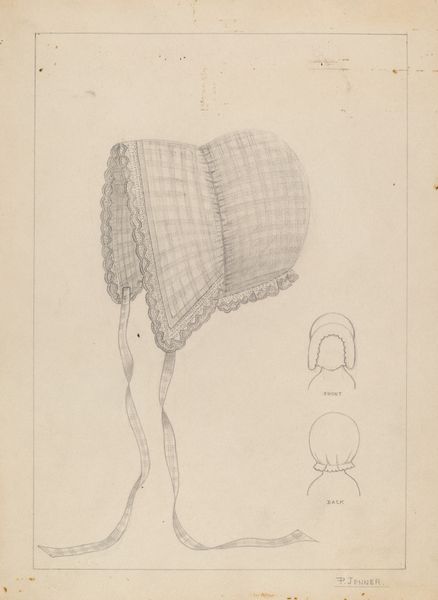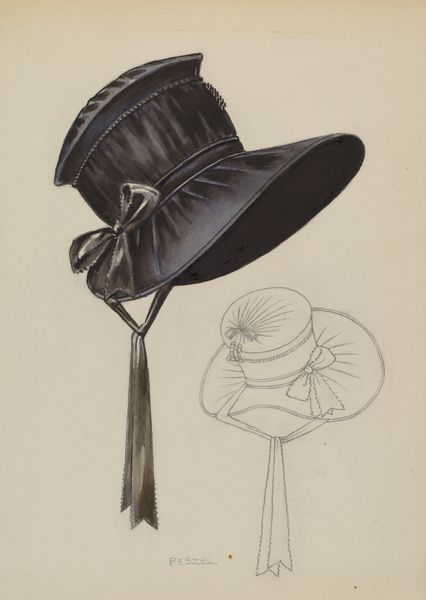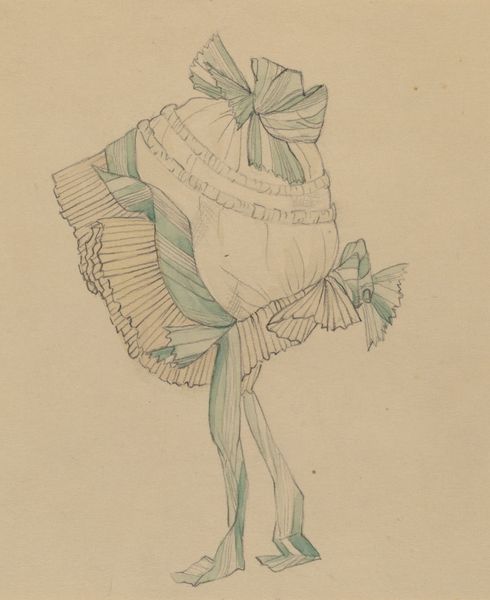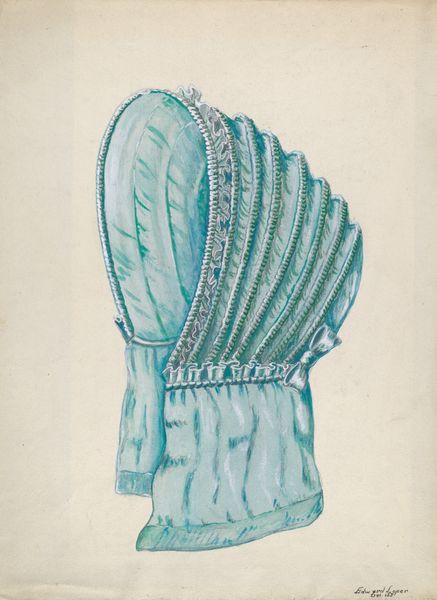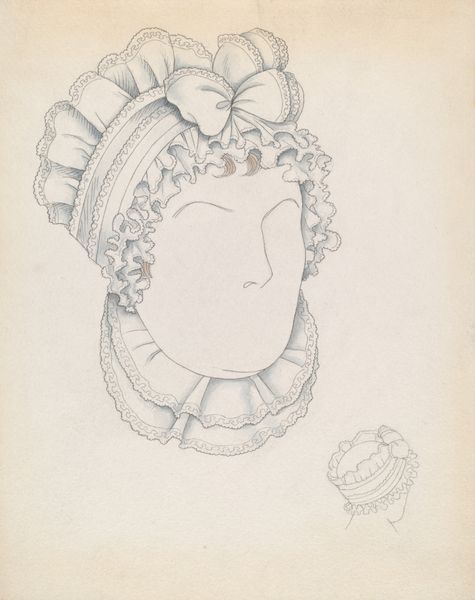
drawing, watercolor
#
portrait
#
drawing
#
watercolor
#
coloured pencil
Dimensions: overall: 30.5 x 22.9 cm (12 x 9 in.)
Copyright: National Gallery of Art: CC0 1.0
Curator: The "Opera Hood" a watercolor and colored pencil drawing from around 1936 by Melita Hofmann presents a delicate object, perhaps an unused or a preserved garment. Editor: It looks like a tender rendering of a bygone era. The soft blues and yellows give it an innocent, almost melancholic feel. Curator: Absolutely, and note how Hofmann seems to present us not just with an item but also with its process, the very blueprint of creation through the inclusion of fainter initial sketch works. We can almost see how this garment, or a series of related garment forms might come into being! Editor: True! This drawing really points out the position of garments in interwar societies, and how they represent the intersection of artistic vision, personal adornment, and even social identity. Curator: The texture is compelling—you see the way the pencil captures the subtle variations in the fabric, while watercolor adds depth and luminescence to the colors, giving life to what could've easily been just another sketch of common attire. Consider its creation alongside shifts towards ready-to-wear culture and increasing anxieties regarding gendered performance during those times. Editor: Right, thinking about this being created in 1936 makes you consider, what social events would this head covering have been worn to? Who might the owner have been and where does this drawing sit within larger narratives around women in those interwar years? Was this for a child? Or was it an item that may have alluded to more theatrical or fashionable styles, playing off the period's own obsession with gender roles and social identities? Curator: Considering how these garments circulate – between hand-making, design blueprints and even simple garments found within everyday social practice allows this singular portrait to act almost like a window into many of these past material cultures. Editor: That makes this more than just a drawing of clothing, then. It is an echo of times, perhaps, a portrait, or social mirror, of personal histories—with layers that might otherwise be inaccessible. Curator: Well, this piece certainly left me pondering the labour and skill involved in not just crafting but designing these sort of commodities in those interwar years. Editor: And it got me thinking more broadly about gendered labor histories through personal artefacts during periods of rapid cultural changes, what objects and narratives might one preserve or archive moving forward.
Comments
No comments
Be the first to comment and join the conversation on the ultimate creative platform.
